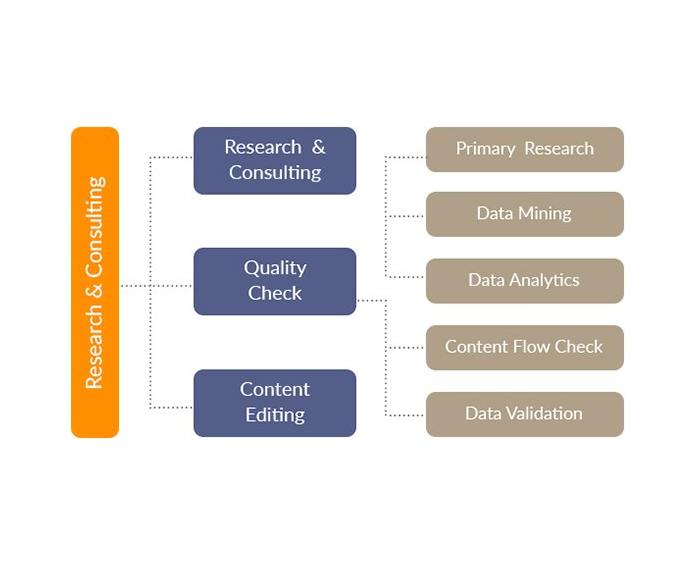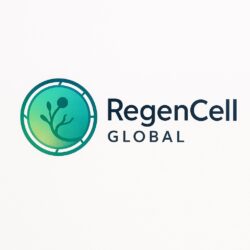We help clients make informed business decisions. We offer market intelligence studies ensuring relevant and fact-based research across a range of industries including chemicals, materials, energy, healthcare, and technology. With a deep-seated understanding of many business environments, StemCell Research Institute Corp provides strategic objective insights:
a) Syndicated/published research
- Based on internal analysis
- Involves keeping track of the ever charging market trends
- Identification of key problem areas and rendering solution catering to a wide array of clients
- Identification of subject based on interaction with key opinion leaders and industry exports
- Undertaking studies by tracking strategic initiatives undertaken by major market participants
- Undertaking studies by tracking change in healthcare spending patterns
- Undertaking studies by tracking product movement and pipeline
b) Customization/requirement based studies
- Studies based on published research
- Market intelligence studies designed or modified in compliance with sustainability strategies
- Target studies. For instance, product specific or regional/country specific studies
- Recommendation based studies
c) Due diligence/consulting
- Product benchmarking and position studies
- Market entry strategies
- Patent portfolio and IPR based studies
- Opportunity assessment
- Commercialization techniques
- Pricing modules
- Technology modules
- Technology benchmarking
- Long term client engagements
- Unmet need analysis
d) Our mission
StemCell Research Institute Corp: To advise and help a corporate in developing their business through data mining with these steps:
- Understand the Business Objectives: Start by understanding the corporate’s business objectives and key challenges. Identify the areas where data mining can make a significant impact, such as improving customer retention, optimizing operations, or identifying market trends.
- Define Data Mining Goals: Collaborate with the corporate to define specific goals for data mining.
For example, it could be predicting customer churn, identifying cross-selling opportunities, or optimizing pricing strategies. Clear goals will help focus the data mining efforts and measure the success of the project.
- Data Collection and Preparation: Identify the relevant data sources within the corporate’s ecosystem.
This may include transactional data, customer records, marketing data, or external data sources. Extract, transform, and load (ETL) processes may be required to clean, integrate, and format the data for analysis.
- Select Data Mining Techniques: Based on the defined goals, select appropriate data mining techniques. These can include regression analysis, classification algorithms, clustering, association rule mining, or predictive modeling. Consider the available data and the specific business problem to determine the best techniques to apply.
- Analyze and Interpret Data: Apply the selected data mining techniques to analyze the collected data. Explore patterns, correlations, and trends within the data. Use visualization tools to present the findings in a meaningful way, making it easier for the corporate to understand and act upon the insights.
- Extract Actionable Insights: Transform the data analysis results into actionable insights. These insights should provide the corporate with clear recommendations or strategies to improve their business operations.
For example, it could involve identifying customer segments for targeted marketing campaigns or optimizing
the supply chain based on demand patterns.
- Implement and Monitor: Collaborate with the corporate to implement the recommended strategies and monitor their effectiveness. This may involve deploying data-driven systems, integrating analytics into existing processes, or creating new workflows. Continuously evaluate the impact of the implemented strategies and make adjustments as needed.
- Ensure Data Privacy and Security: Throughout the data mining process, ensure the privacy and security of sensitive data. Adhere to relevant data protection regulations, implement proper data anonymization techniques, and restrict access to authorized personnel. Data security should be a priority at every stage to maintain the corporate’s trust.
- Iterate and Improve: Data mining is an iterative process. Monitor the outcomes, gather feedback, and refine the models and strategies over time. Regularly update and retrain the models to account for changing business conditions and evolving data patterns.
- Foster a Data-Driven Culture: Encourage the corporate to embrace a data-driven culture by promoting the use of data for decision-making at all levels. Provide training and support to employees to build their data literacy skills. This will help ensure the long-term success and sustainability of data mining initiatives. Effective data mining requires close collaboration between data scientists and business stakeholders. By combining technical expertise with domain knowledge, you can assist the corporate in leveraging data mining to develop their business.
NewLife Medical Services: to offer skin and chronic wound cell therapy products is a complex topic, and it’s important to note that regulations regarding the sale and use of stem cells can vary by country and region.
We consult with medical professionals and legal experts in specific jurisdiction for accurate and up-to-date guidance.
- Understand the regulations: Familiarize yourself with the regulations and guidelines governing the buying and selling of stem cells in the country or region. Stem cell therapies are often subject to stringent regulations due to safety and ethical considerations.
- Find a reputable source of stem cells, it’s crucial to ensure with a reputable and licensed provider.
Research clinics, hospitals, or laboratories that specialize in stem cell therapies and have a track record of compliance with regulatory requirements.
- Consult with medical professionals: Before pursuing any stem cell treatment, to consult with medical professionals who specialize in the relevant field.
- Legal considerations: Ensure with all legal requirements and regulations related to the purchase and sale of stem cells. Work with legal experts to navigate any legal complexities involved in the process.
- Ethical considerations: Stem cells can be derived from various sources, such as embryos, adult tissues, or umbilical cord blood. It’s essential to consider the ethical implications associated with different types of stem cells and their procurement methods.
e) Our objectives
- To support in conducting of market research in the areas of: Neurological disorders; Musculo-skeletal disorders; Cardiovascular disorders: For example, cardiomyopathy, ischemic heart disease, etc.. Haematopoietic disorders: For example – sickle cell, thalassemia, leukemia, etc. Cartilage and bony disorders; Corneal and limbal disorders; Malignancies; Renal and hepatic disorders; Disorders of the respiratory tracts; Dermatological conditions; Autoimmune disorders; Diabetes Mellitus; and Other disorders.
- To study and evaluate the safety and efficacy of alternative systems of medicine such as Ayurvedic, Homeopathic, and the like in concert with stem cell therapy.
- To take decisions on what are the newer indications for stem cell therapy
- To set up an accreditation process for stem cell centers so that appropriate national standards for functioning of stem cell therapy centers could be framed and implemented.
- To do all such acts, deeds, matters and things, as may be necessary, desirable or expedient, to further the attainment of objects of the Society, such as: (a) to set indications and contraindications for stem cell therapy; (b) to setup guidelines for each disease group; (c) accreditation of the stem cell therapy centers; (d) to set up guidelines for rehabilitation, following stem cell therapy; (e) monitoring and documentation and laying down of the standards for safety and efficacy of Stem cell therapy; (f) post treatment liability; (g) guidelines for documentation required/needed to be maintained; (h) set up/write up a standard informed consent, which can be used uniformly or as a framework for various disorders; (i) establishment of standard protocols; (j) to engage in dialogue with various regulatory authorities like ICMR, DGCI, Health ministry, etc.; (k) validation of treatment protocols; (l) guidelines for production protocols; (m) to carry out awareness programs/educational activities; (n) to ensure availability of treatment to the masses; (o) to make provision for handling medico-legal issues and make clear the society’s stand in this matter; (p) to chart out the standard operating procedure for the society; (q) approval or validation of types of cell types which can and cannot be used for various disorders.
- To support market research work, or work connected with or conducive to research and to encourage and improve knowledge of the persons who are engaged in any medical or related profession so as to make available medical relief to the public at large.
- To provide support in patenting products developed as part of the Research & Development initiatives and indigenously developed research and therapy protocols.
- To develop training modules, conduct training programs for professional development and accreditation and experience-based learning, in any field.
e.1. Statistical model
Our market estimates and forecasts are derived through simulation models. A unique model is created customized for each study. Gathered information for market dynamics, technology landscape, application development and pricing trends is fed into the model and analyzed simultaneously. These factors are studied on a comparative basis, and their impact over the forecast period is quantified with the help of correlation, regression and time series analysis. Market forecasting is performed via a combination of economic tools, technological analysis, and industry experience and domain expertise.
Econometric models are generally used for short-term forecasting, while technological market models are used for long-term forecasting. These are based on an amalgamation of technology landscape, regulatory frameworks, economic outlook and business principles. A bottom-up approach to market estimation is preferred, with key regional markets analyzed as separate entities and integration of data to obtain global estimates. This is critical for a deep understanding of the industry as well as ensuring minimal errors. Some of the parameters considered for forecasting include:
- Market drivers and restrains, along with their current and expected impact
- Raw material scenario and supply v/s price trends
- Regulatory scenario and expected developments
- Current capacity and expected capacity additions up to 2025
We assign weights to these parameters and quantify their market impact using weighted average analysis, to derive an expected market growth rate.
e.2. Primary validation
This is the final step in estimating and forecasting for our reports. Exhaustive primary interviews are conducted, on face to face as well as over the phone to validate our findings and assumptions used to obtain them. Interviewees are approached from leading companies across the value chain including suppliers, technology providers, domain experts and buyers so as to ensure a holistic and unbiased picture of the market. These interviews are conducted across the globe, with language barriers overcome with the aid of local staff and interpreters. Primary interviews not only help in data validation, but also provide critical insights into the market, current business scenario and future expectations and enhance the quality of our reports. All our estimates and forecast are verified through exhaustive primary research with Key Industry Participants (KIPs) which typically include: Market leading companies, Raw material suppliers, Product distributors, Buyers
The key objectives of primary research are as follows:
- To validate our data in terms of accuracy and acceptability
- To gain an insight in to the current market and future expectations
f) Our values
- Service Integrity
- Diversity & Employee Satisfaction
- Client Satisfaction
- Innovation
- Building a Kaizen Process
- Social Responsibility
g) Our service model
StemCell Research Institute Corp is a U.S. based market research and consulting company, registered in the State of California. The company provides syndicated research reports, customized.
Our research analysts and domain experts have extensive hands-on experience in these geographies
h) Our Service Reach
Experience of conducting large scale primary research. In addition to large scale online surveys and telephonic interviews, we also have strong primary survey partnership with multiple vendors in these geographies high capable of conducing face-to-face interviews
Our Organization structure & client management process


